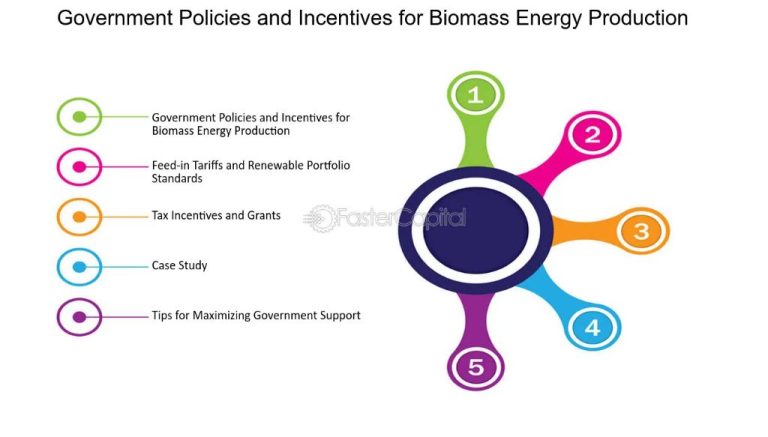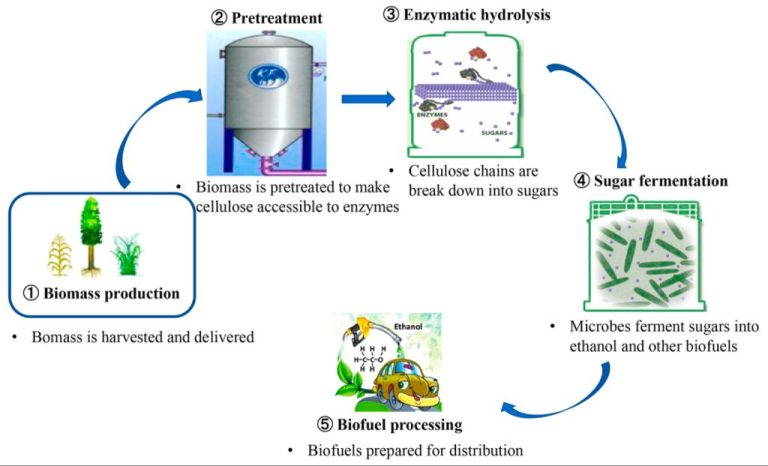What Is The Uk Biomass Strategy 2023?
Biomass refers to organic matter that comes from plants and animals. It includes wood, agricultural crops and waste, food waste, animal manure, aquatic plants, and biodegradable municipal waste. Biomass is considered a renewable energy source because the organic materials it comes from can be replenished over relatively short periods of time compared to fossil fuels.
Biomass is an important renewable energy source in the UK. According to Biomass Energy (https://www.biomass-energy.org.uk/), biomass now generates 11% of the electricity in the United Kingdom. The key role of biomass is that it can provide renewable alternatives to fossil fuels across heat, electricity and transport applications. Converting to biomass energy supports the UK’s goals to reduce greenhouse gas emissions and increase renewable energy production.
Background
Biomass energy has a long history of use in the United Kingdom. As early as the 11th century, wood was used as the primary energy source for heating and cooking. During the Industrial Revolution in the 18th century, biomass remained an important energy source, providing fuel for industrial processes like ore smelting and brick firing. The UK continued relying on biomass, mainly waste wood and straw, into the early 20th century. Usage declined after World War II as oil, natural gas and coal became more prominent. However, interest in biomass resurged in the 1970s during the oil crisis as an alternative energy source. The UK produced several key reports on biomass potential in the late 1970s and established the first long-term trials of wood energy. In the 1990s, biomass systems expanded, often supported by government incentives. Today, biomass accounts for about 8% of the UK’s total primary energy demand.
UK Biomass Strategy 2023
On August 5th, 2023, the UK government unveiled its comprehensive biomass strategy for 2023 and beyond, outlining goals and priorities for sustainable biomass usage in the country.[1] The main goals of the strategy are to regulate biomass sustainability, incentivize biomass growth and usage, and convert existing coal plants to use biomass.[2]
Key priorities of the 2023 Biomass Strategy include:
- Implementing sustainability standards for all biomass projects to ensure carbon emissions reductions and protect forests.
- Developing dedicated biomass supply chains and expanding UK biomass resources.
- Providing financing mechanisms to support conversions of coal plants into biomass-fired plants.
- Investing in biomass innovation, infrastructure, and skills training.
- Increasing biomass usage for heating and power generation to meet renewable energy targets.
Through these measures, the UK government aims to position biomass as an integral part of its low-carbon energy mix and build a thriving domestic biomass industry.
Sustainability Standards
The UK has some of the world’s most stringent sustainability criteria for biomass. In April 2021, the UK government released a report calling for evidence on strengthening biomass sustainability standards as part of achieving net zero emissions [1]. The Forest Stewardship Council (FSC) certification system aims to ensure sustainable management of forests globally, but some argue it has failed to prevent unsustainable biomass harvesting in practice [2]. The UK Biomass Suppliers List requires participants to meet sustainability criteria covering greenhouse gas emissions, forest management practices, and land use changes. The government is considering expanding sustainability requirements to cover biodiversity and soil quality impacts.
Biomass Supply
The UK relies on both domestic and imported sources of biomass. Domestically, biomass comes from sources like forestry residues, arboricultural arisings, biodegradable waste, and energy crops. However, domestic supply is not sufficient to meet demand. As a result, a significant portion of biomass is imported.
In 2020, nearly 80% of the wood pellets used in biomass power plants in the UK were imported. The main exporting countries are the United States, Canada, and the Baltics like Estonia and Latvia. According to a report, there are sustainability concerns around imported biomass from old forests in Estonia entering the UK supply chain.
The UK aims to increasingly utilize sustainable domestic biomass supply. The government’s Bioenergy Strategy suggests increasing UK biomass production through planting of energy crops on marginal land and managing existing woodlands. However, dependence on imports is expected to continue. Sustainability certification schemes are being strengthened to ensure responsible sourcing of imported biomass.
Converting Coal Plants
A key component of the UK’s biomass strategy involves converting existing coal power plants to use biomass. This is seen as an expedient way to continue utilizing existing infrastructure while transitioning away from coal. According to a 2017 open letter to the UK Chancellor, as of March 2017 there were plans to convert 8 of the UK’s 9 remaining coal plants to biomass.
Converting coal plants to biomass is relatively straightforward from a technological perspective. It primarily involves retrofitting the boiler and installing new fuel handling equipment designed for biomass. However, some environmental groups have criticized converting coal plants to biomass. They argue it is misleading to classify power from converted plants as renewable energy. There are also concerns around the sustainability and emissions from harvesting large amounts of biomass.
According to a report from the Energy Transitions Commission, converting coal to biomass plants in the UK costs around £100-150/kW. The UK government provided over £730 million in subsidies to converted coal plants from 2012-2017. Financial incentives have enabled many coal plant conversions that otherwise may not have been economically viable (An open letter to the Chancellor of the Exchequer, 2017).
Financial Incentives
The UK government has provided various subsidies and incentives to support the growth of biomass energy production and use. Some key policies include:
The Renewables Obligation (RO) scheme was introduced in 2002 to incentivize renewable electricity generation. Generators received Renewables Obligation Certificates (ROCs) for each MWh of eligible renewable electricity produced which could then be sold to suppliers. Biomass electricity was eligible and received 1.5 ROCs per MWh, providing a significant subsidy. The RO closed to new projects in 2017.
The Renewable Heat Incentive (RHI) was launched in 2011 to encourage uptake of renewable heat technologies. It provided tariff-based payments to non-domestic users for generating and using renewable heat. Biomass boilers were eligible technologies under the RHI. The non-domestic RHI scheme closed in 2021.
Contract for Difference (CfD) scheme started in 2015 and offers long-term contracts with guaranteed prices for low-carbon electricity production. Biomass conversion projects have participated in the CfD auctions and secured support. The scheme aims to bring forward 3TWh of bioenergy capacity by 2027.
Enhanced Capital Allowances offer tax relief for businesses investing in biomass heating systems and CHP plants. Businesses can deduct the full cost of the capital asset from their taxable profits in the year of purchase.
These incentives have helped drive growth in biomass energy use. However, financial support is being phased out over time with biomass required to compete on costs with other energy sources. The UK plans to end subsidies for bioenergy after 2027.
Criticisms
The UK’s biomass strategy has faced criticism from environmental groups over concerns about the sustainability and carbon neutrality of biomass. Groups like the Natural Resources Defense Council (NRDC) have raised alarm that the UK’s demand for wood pellets is leading to deforestation and habitat destruction in North American forests, especially wetland forests in the southeastern US. Burning wood releases CO2 immediately into the atmosphere, and regrowing trees takes decades to recapture that carbon. There are concerns that the timescale makes burning wood worse for the climate than coal in the short term.
According to the NRDC, the UK’s new 2023 biomass strategy does not do enough to protect forests, despite promises of improved sustainability standards. The standards still treat biomass as carbon neutral, allowing continued harvesting of whole trees and residues for biomass production [1]. Critics argue that biomass standards in the UK, EU and Japan all contain loopholes that allow unsustainable forest biomass harvesting to continue [2].
Future Outlook
The UK government projects significant growth in biomass energy production over the coming years as part of its strategy to reach net zero emissions by 2050. The Department for Business, Energy and Industrial Strategy (BEIS) estimates that biomass will contribute 35-50TWh of renewable energy generation annually by 2030, up from around 30TWh currently.
This growth will be driven by converting more coal-fired power stations to run on biomass, as well as potential new dedicated biomass power plants. Drax, which runs the UK’s largest power station, has announced plans to build new biomass pellet production plants in northern England to help meet growing demand.
The UK is also investing in developing advanced bioenergy and biofuel technologies through the BEIS Energy Innovation Programme. This includes research into using wastes and residues more efficiently, gasification, biofuels for transport and developing energy crops. The aim is to create a more sustainable and affordable biomass supply chain for the future.
However, some experts warn that supplies of sustainable biomass fuel may be limited globally, and competition over biomass resources will increase as other countries also expand bioenergy. This could make meeting the UK’s biomass growth projections challenging. Careful planning around sourcing and forest management will be required to scale up biomass sustainably.
Conclusion
In summary, the UK Biomass Strategy 2023 is an important part of the UK’s efforts to reduce carbon emissions and meet climate goals. Key takeaways include:
- The strategy aims to expand sustainable biomass resources to provide 8-10% of UK energy by 2030.
- Strict sustainability standards will be implemented to ensure biomass achieves significant carbon reductions.
- Domestic biomass supply will be increased, but imported biomass will still be needed.
- Many coal plants will be converted to use biomass instead of coal.
- Financial incentives like the Renewable Heat Incentive will support biomass growth.
- Critics argue biomass doesn’t reduce emissions enough or has adverse impacts.
- The future of biomass in the UK beyond 2030 is uncertain and depends on many factors.
Overall, the UK Biomass Strategy 2023 represents a major policy push to expand biomass energy and reduce fossil fuel dependence, but its effectiveness remains to be seen.





